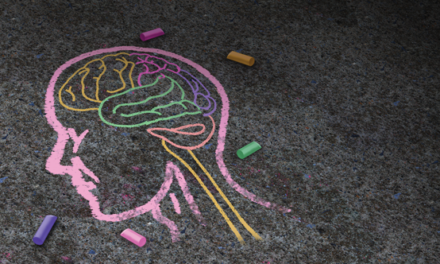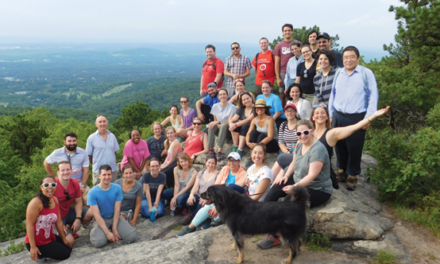It’s not enough to provide students with general information about the college application process. Many young people need specific, personalized, hands-on guidance.
Over the past several decades, the mission and practice of high school counseling has undergone a transformation. Until the 1960s, counselors focused mainly on providing therapeutic support to students, and they devoted relatively little time to helping them plan for postsecondary education (Armor, 1971; McDonough, 2005). However, as college enrollments grew steeply across the United States, so too did the importance of college advising. In turn, that brought close attention to the “gatekeeping” function of the work. As researchers observed, many counselors — showing clear patterns of gender, race, and social class bias — actively steered certain students into low-status institutions or discouraged them from going to college at all (Cicourel & Kitsuse, 1963; Rosenbaum, 1976).
Since that time, the college application process has continued to be affected by racial and social class inequalities, with the most affluent students receiving the greatest amount of support (Holland, 2019; McDonough, 1997). For the most part, though, overt bias among counselors has become rare. As early as the 1990s, counselors had become keen to avoid even the slightest appearance that they played a gatekeeping role. Indeed, researchers found that most were unlikely to discourage students from applying to college even when they thought those students’ plans were unrealistic (Rosenbaum, Miller, & Krei, 1996).
Few counselors now provide the kind of personalized guidance that many young people need to translate their aspirations into concrete actions.
That brings us to our present dilemma: Today, most counselors encourage all students to go to college, and they try to provide them with useful information about the college search process (even though, in the internet era, many students are able to find such information on their own). However, they’ve become increasingly reluctant to advise those students as to what kinds of programs might be a good match for them, where they ought to apply, and so on. Perhaps because they’re wary of their own biases (or the appearance of bias) and because they’re concerned they don’t fully understand current college options and labor market trends, few counselors now provide the kind of personalized guidance that many young people need to translate their aspirations into concrete actions.
For example, consider the findings from a research study of Chicago high school students, most from low-income backgrounds, who had ambitions to attend a four-year college but then decided not to enroll. Interviews revealed that these students received strong encouragement to go to college and were given a lot of information about college planning. However, most said that nobody ever helped them “organize their information and manage the process” (Roderick et al., 2008, p. 40). While their counselors provided generic resources and recommendations, they never addressed their specific needs and interests, their anxieties about choosing the wrong college, their concerns about college costs, or their doubts about going to college at all.
What would it take for college counselors to provide more personal guidance to such students? To be sure, more funding would be a start. As long as high schools are understaffed and overburdened, it’s no surprise that many college counselors offer one-size-fits-all information rather than one-to-one advising. In any but the most affluent districts, who has the time to give personal attention to every student?
However, resources tell only part of the story. Regardless of their caseloads, and even in schools where counseling offices are adequately funded and staffed, we’ve found most college advisers to be deeply conflicted, even confused, about their role.
College access, fit, and success
For much of the nation’s history, relatively few students enjoyed access to higher education. However, given the numbers of nonselective colleges that now exist across the country, that’s no longer the case. In fact, a recent survey found that almost 90% of high school graduates are able to gain admission to and enter a college within eight years of high school graduation. Access does not necessarily translate to success, though. For example, almost half of all community college students never finish a degree program (Rosenbaum et al., 2015), and degree completion remains a serious challenge for many students in four-year colleges as well — for instance, 40% of first-time, full-time students who enroll in a four-year college do not have a bachelor’s degree within six years of enrollment (National Center for Education Statistics, 2019).
Further, many students have settled for a school that doesn’t really fit their interests and talents. Nationwide, roughly 2 in 5 students enroll in a college that represents an “undermatch” for them, meaning that, given their qualifications, they likely would have gained admission to and succeeded at a more selective institution (Smith, Pender, & Howell, 2012). Finding a good fit tends to be especially challenging for first-generation college students (Roderick et al., 2008), whose relatives, neighbors, and friends may have little firsthand knowledge to share with them during the college search process (Bloom, 2007; Hardie, 2015; Harding, 2009; Stephan, 2013).
Counselors’ views
In our own recent research, we’ve sought to better understand counselors’ priorities and perceptions of their role, including their beliefs about issues such as college access, fit, and undermatching. Two studies in recent years have resulted in interviews with 52 counselors and advisers from 14 schools in Illinois. They worked in urban (60%) and suburban (40%) schools serving students from a variety of backgrounds.
Over the past decade, researchers have found that undermatching has decreased somewhat, probably due in part to efforts by some counselors to steer students toward four-year colleges (Smith, Pender, & Howell, 2012). We’ve seen some evidence of that, too. As one counselor told us, describing her efforts to address undermatch, especially as it applies to low-income students:
I know that there have been a number of successes that I’ve had in terms of reaching those kids who wouldn’t otherwise know what to do and they’d probably just walk in the doors of [the local community college] and be OK with it because they didn’t know anything else. But once they learned about different options . . . they are open to other options which are better fitting for them. [emphasis added]
However, despite improvements in efforts to address undermatching, this counselor is not the norm. The majority of the counselors we’ve interviewed have been concerned primarily with making sure that their students submit college applications, period, with little regard to the type of institution.
In some cases, counselors themselves may be unaware of the limitations of community college programs. When we asked counselors across several different high schools about the advantages and disadvantages for students of applying to community colleges, all of them described those schools’ open-admission policies and low cost as significant advantages. However, very few of them noted any potential disadvantages or challenges — of more than 50 counselors, only four mentioned high dropout rates and the often inadequate advising and supports that many community colleges offer (Bailey, Smith Jaggars, & Jenkins, 2015).
Of course, community colleges are not always a bad choice. Although students sometimes face obstacles when attempting to transfer into a bachelor’s degree program, this option can work well for those with strong academic preparation and a clear plan for earning a diploma. In addition, community colleges offer one- and two-year programs that have lower academic requirements than four-year institutions and prepare students for careers that often have higher payoffs than students could get with a high school diploma alone (Rosenbaum, Ahearn, & Rosenbaum, 2017). Nevertheless, most community colleges are starved for resources, their counselors have impossible caseloads (often more than 1,000 students), and it’s not always easy for students to find out which community college courses will count toward a bachelor’s degree (Bailey, Smith Jaggars, & Jenkins, 2015).
In general, while they do encourage college aspirations, high school counselors are too often content with knowing that students have some college plan, whatever that plan may be. In some schools, this even translates into making college applications a requirement for graduation, a requirement that can easily be satisfied through a quick application to unselective and open-access colleges. In turn, these schools may tout the high rates at which their students apply to and enroll in college, boasting of this as a sign of their success. We think there are serious reasons for concern, however, when we hear a counselor confess, for instance, that she has doubts about her school’s record of sending graduates to college: “It gets muddy, because 99% of our kids have postsecondary plans, but how solid are they? That is more mysterious.” Another counselor bluntly admitted that students “aren’t allowed to leave [this school] without some plan. Even if it isn’t the truth, we want them to say [they have] a plan.”
Of course, there may be good reasons for requiring all students to complete college applications. For instance, having already gone through the process of applying to college and completing the Free Application for Federal Student Aid can be helpful for students who delay college until several years after high school, when they lack crucial institutional supports, which is especially common among low-income minority males (DeLuca, Campet-Lundquist, & Edin, 2016). But focusing so intently on access, without attention to whether the choices are a good match for the given students, does little to address inequalities in what type of college students enroll in and in their completion outcomes.
More concerning, counselors often tell us that it would, in fact, be inappropriate, as they see it, for them to try to help individual students find a good college match. In our interviews, the vast majority of counselors have said that their core duty is to provide students with basic information about applying to college, securing financial aid, and managing other parts of the college search process. To provide advice, they often insist, is not their job. As one counselor explained, “I don’t think I would present [the student with] what I really believe might be better for him or her. That’s not our role.” They might give advice if a student explicitly asks for it, some say, but others would refuse even under those circumstances — as one counselor put it, “It’s not for me to say.” Still others have confessed to us that they would like to provide individualized advice but lack the confidence to do so. As one counselor told us, “I don’t want to be responsible [for wrong choices].”
Advisers must advise
It’s time for a new consensus among students, counselors, school administrators, and parents about what students need and what counselors are expected to do. We must consider the advantages and disadvantages of different counseling approaches, and how students, especially first-generation college-bound students, are going to get specific personalized guidance about each stage in the college application process.
Importantly, counselors should receive appropriate training in recognizing and avoiding biases on the basis of race, ethnicity, social class, and gender. These efforts should be ongoing, and their effectiveness should be systematically assessed. Moreover, as counselors understandably have difficulty keeping abreast of how college programs and labor market demands are evolving, high schools should provide in-service training and other resources that inform counselors of college and labor market options.
All of these questions are now complicated by the COVID-19 pandemic. In any year, high school seniors trying to make life-changing decisions are going to be confused, but the pandemic has increased students’ uncertainty. It is not clear when some colleges will reopen for in-person classes, leaving students to learn from home and without many of the supports they would normally have on campus. On top of that, it is not clear what kind of job market graduating students will find next summer, much less a few years down the road. These added layers of uncertainty can be a huge source of anxiety and discouragement for even the most motivated student. Yet, despite the many uncertainties, students must make decisions, and counselors are in a position to help. Now more than ever, students need more than information; they need individualized help to make sense of the situation and translate information into thoughtful decisions.
References
Armor, D. (1971). The American school counselor: A case study in the sociology of professions. New York, NY: Russell Sage Foundation.
Bailey, T., Smith Jaggars, S., & Jenkins, D. (2015). Redesigning America’s community colleges: A clearer path to students’ success. Cambridge, MA: Harvard University Press.
Bloom, J. (2007). (Mis)reading social class in the journey towards college: Youth development in urban America. Teachers College Record, 109 (2), 343-368.
Cicourel, A.V. & Kitsuse, J.I. (1963). The educational decision-makers: An advanced study in sociology. Indianapolis, IN: Bobbs-Merrill.
DeLuca, S., Clampet-Lundquist, S., & Edin, K. (2016). Coming of age in the other America. New York, NY: Russell Sage Foundation.
Hardie, J.H. (2015). The best laid plans: Social capital in the development of girl’s educational and occupational plans. Social Problems, 62, 241-265
Harding, D.J. (2009). Violence, older peers, and the socialization of adolescent boys in disadvantaged neighborhoods. American Sociological Review, 74 (3), 445-464.
Holland, M.M. (2019). Divergent paths to college: Race, class, and inequality in high schools. New Brunswick, NJ: Rutgers University Press.
McDonough, P.M. (1997). Choosing colleges: How social class and schools structure opportunity. Albany, NY: SUNY Press.
McDonough, P.M. (2005). Counseling matters: Knowledge, assistance, and organizational commitment in college preparation. In W.G. Tierney, Z.B. Corwin, & J.E. Colyar (Eds.), Preparing for college: Nine elements of effective outreach (pp. 69-87). Albany, NY: State University of New York Press.
National Center for Education Statistics. (2019). The condition of education 2019 (NCES 2019-144), Undergraduate retention and graduation rates. Washington, DC: U.S. Department of Education.
Roderick, M., Nagaoka, J., Coca, V., & Moeller, E. (2008). From high school to the future: Potholes on the road to college. Chicago, IL: Consortium on Chicago School Research.
Rosenbaum, J.E. (1976). Making inequality. New York, NY: Wiley.
Rosenbaum, J.E., Ahearn, C., Becker, K., & Rosenbaum, J. (2015). The new forgotten half and research directions to support them. New York, NY: William T. Grant Foundation.
Rosenbaum, J.E., Ahearn, C., & Rosenbaum, J. (2017). Bridging the gaps: College pathways to career success. New York, NY: Russell Sage Foundation.
Rosenbaum, J.E., Miller, S.R., & Krei, M.S. (1996). Gatekeeping in an era of more open gates: High school counselors’ views of their influence on students’ college plans. American Journal of Education, 104, 257-280.
Smith, J., Pender, M., & Howell, J. (2012). The full extent of student-college academic undermatch. Economics of Education Review, 32, 247-261.
Stephan, J.L. (2013). Social capital and the college enrollment process: How can a school program make a difference? Teachers College Record, 115 (4), 1-39.
ABOUT THE AUTHORS

Gorana Ilic
GORANA ILIC is a research coordinator at the Institute for Policy Research at Northwestern University, Evanston, IL.

Isabelle Matthies
ISABELLE MATTHIES is an undergraduate student in social policy and religious studies at Northwestern University, Evanston, IL.

James E. Rosenbaum
JAMES E. ROSENBAUM is a professor of sociology, education, and social policy at Northwestern University in Evanston, Ill. He is the author of Bridging the Gaps: College Pathways to Career Success .

Lynn Meissner
LYNN MEISSNER is a Ph.D. candidate in the School of Education and Social Policy at Northwestern University, Evanston, IL.










